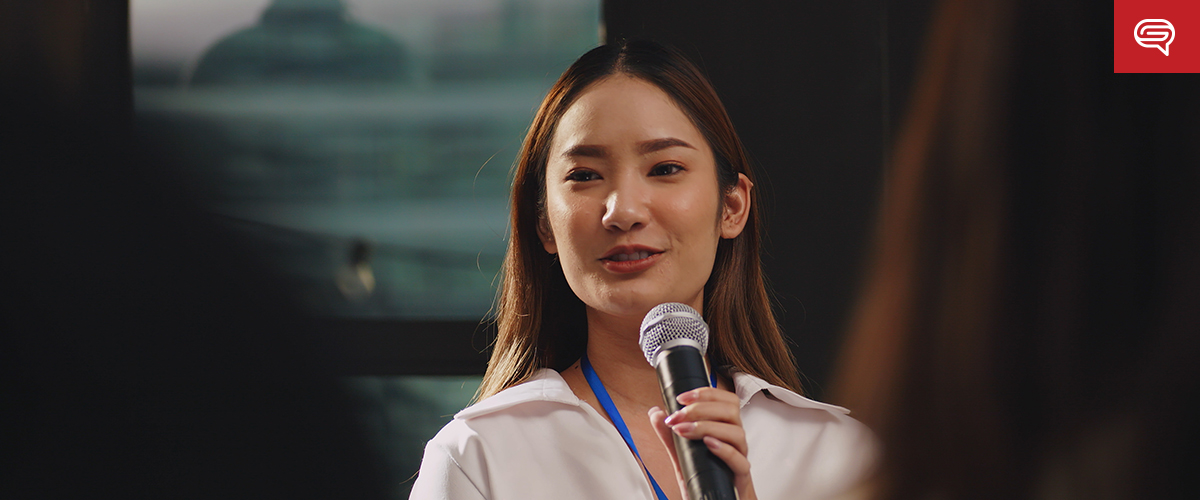“The beginning is the most important part of the work.”—Plato
When it comes to presentations, there’s nothing more important than a strong introduction. How will you capture the attention of your audience otherwise? It’s not enough to recite a quick spiel about you and what you’ll be covering for the next hour. The first thing you say should make an instant connection. Introductions need to be both powerful and memorable. You need something that will hook the audience and reel them in.The best way to do that is to think outside the box. To make sure your introductions are effective, you’ll need to do something that really stands out. Whatever you start with should urge the audience to start asking questions about the topic you’re covering. If you remember our previous discussion on Nancy Duarte’s book Resonate, you’ll know that every presentation needs a STAR Moment—something they’ll always remember. If you want your introductions to fall under that category, you’ll need to find more creative ways to start your presentations.Echoing the thoughts of Plato, creative introductions will help jump start your presentation. Here are a few things you can do to get the audience interested:
Tell a story
Sharing stories is practically part of our DNA. As social beings, storytelling is one of the easiest ways to connect and cultivate relationships with the people around us. Unlike reciting facts, storytelling is focused on emotional response. If you remember, we discussed how effective storytelling can evoke strong feelings of empathy. According to a study conducted by Dr. Paul Zak, hearing stories can trigger the release of neurochemicals that are responsible for human bonding. Considering these facts, it’s easy to see why a quick story is a great way to start a presentation.To work as an introduction, make sure your story echoes the core message of your presentation. Your story should make a point that you can easily connect with the rest of your presentation. You see this a lot in TED Talks. TED speakers usually start with anecdotes from personal experience that they later connect with the main point of their discussion.
Describe a scenario
Another way to engage the audience is by igniting their imaginations. Describe a specific situation or scenario and enable the audience to play a bit of a role in your presentation. You can give them a chance to consider something they might have never thought of before. Ask them to use their imaginations to set your presentation as something that’s more relatable and closer to home.According to an eBook by We Are Visual, there are 3 ways to use this technique for introductions. First, you can ask the audience to imagine what it would be like to be someone else. You can also describe a certain action that will lead to a particularly positive outcome. Lastly, you can also ask them to visualize a certain metaphor or concept. Whatever you decide, make sure the scene you describe perfectly connects with your core message.
Share crucial information
What could be more interesting than learning something new? If you really to reel the audience in, you can entice them by providing relevant information. Present a quick fact or statistic that will give a bit of background about your discussion. Make sure it’s something noteworthy that will lead the audience to feel curious about what might come next. A fact that’s common knowledge in your industry won’t get you too far.
Ask a thought-provoking question
You can also ask the audience a few rhetorical questions to further stimulate their curiosity. Give them something they can ponder on by posing a few thought-provoking questions that correspond to your main point. To keep your presentation cohesive, you can address the questions later on in your discussion. If you’re aiming for a bit of interactivity, you can also ask a few people to briefly share their thoughts.
Quote someone else
Like we did in this blog post, you can also start your presentation by borrowing the words of another person. If you start with a quote, you can provide reinforcement to the ideas you’ll be presenting.Remember to choose words that come from a verified source. If you’re quoting an expert or a political figure, make sure you double-check the exact words they said. You can also use proverbs and other cultural expressions. Proverbs are filled with imagery, which might be helpful if you’re planning to translate concepts into visual metaphors. While you don’t have to choose something that’s directly related to your topic, you should be able to easily connect the two ideas together.
A strong introduction is crucial to the success of your presentation. Make sure your introductions are both powerful and memorable by taking note of these 5 creative techniques.
READ MORE:
- How to Write an Introduction for a Presentation – Giving a Presentation In a Day For Dummies
- Http://www.wearevisual.com/ – We Are Visual
Featured Image: Jon Marshall via Flickr





